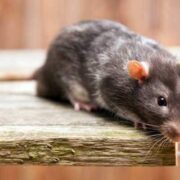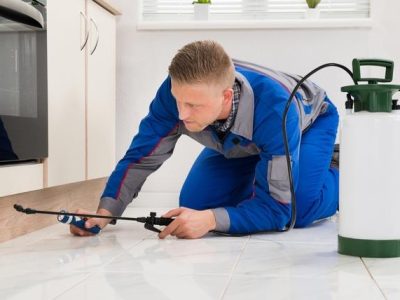The pitter-patter of tiny feet may sound charming when it’s a child running through your home, but when it’s the sound of rodents scurrying about, it’s an entirely different story. Apart from being an irritating nuisance, the presence of rodents poses health risks and these small mammals are also capable of causing property damage. This makes creating a pest-free living space a top priority for homeowners who wish to be rid of them.
One of the most effective ways to achieve this is by implementing comprehensive rodent-proofing measures. In this article, we will explore some key steps to keep those unwanted furry visitors out of your home for good.
Why Rodent-Proofing Is Important
Rodents, though small in stature, can wreak havoc when left free to roam. They transmit diseases and leave behind urine and feces that contaminate the surrounding environment. They also have an odd appetite for chewing through and ruining structural elements like insulation and wires, which could result in hazardous electrical problems and expensive repairs. Taking preventive and proactive action is essential to keeping rodents out of your home. You can safeguard your family’s health and safety, and your property by rodent-proofing your home.
Essential Steps for Rodent-Proofing
Professional Assistance
It’s usually best to contact a professional pest control company if you find evidence of a rodent infestation in your home. They possess the know-how and equipment needed to get rid of rodents and keep them from coming back. Visit this site for professional pest control services from experts.
Seal Entry Points
If there’s no entry point, rodents can’t gain access. Always inspect your home for any gaps, cracks, or holes that rodents can use to gain entry. Areas around doors, windows, vents and utility penetrations should be monitored for these gaps. If found, seal these gaps with material such as caulk or steel wool, which rodents can’t easily gnaw through. Don’t forget to check your foundation for cracks and gaps as well — they usually make homes in these cracks and use them as a base.
Maintain a Clean Environment
One of the most important and basic components of rodent-proofing your home is keeping your immediate environment clean and organized. Naturally, rodents are drawn to places where food and water are easily accessible. You can keep these intruders away by practicing good hygiene.
Make sure to keep your food in airtight containers and clear away any spills or crumbs that they might scavenge. Establishing a routine of maintaining your kitchen and dining areas spotless helps keep rodents out of your house and keeps them from finding easy access to their next meal. Make your home much less attractive to rodents by establishing an environment in which they cannot readily obtain food.
Proper Storage
Using appropriate storage techniques is essential for rodent-proofing your house; this goes beyond storing food. Your home’s layout has the power to make or break your efforts to rodent-proof it. Your home’s appeal to rodents can be greatly decreased by carefully storing the items around your property.
Improper storage of items such as firewood and trash cans can make them ideal for hiding and scavenging. Rodents are kept out of your home and are deterred from coming here by keeping these items away from any entrance. The key to keeping your home free of pests is to create an environment that is less conducive to their presence, thus helping to maintain a pest-free living space.
Secure Your Trash
Rodents are naturally drawn to the smell of garbage as it forms an excellent scavenging site for them. Therefore, securing your trash is a pivotal element in any rodent-proofing strategy. Use trash cans with tight-fitting lids with no cracks or gaps that rodents can sneak into and ensure they are emptied regularly to avoid the emission of odors that might attract rodents to the area.
Trim Vegetation
Overgrown bushes, shrubs and tree branches can provide a convenient bridge for rodents to access your home. By keeping your property’s greenery well-maintained and at a safe distance from your house, you eliminate a potential entry point for rodents.
Trimming and maintaining your vegetation not only eliminates this bridge to your home but also improves the overall aesthetics and curb appeal of your property. It acts as a barrier, reducing the likelihood of rodents entering your home and fortifying your defenses against these pests.
By taking this proactive measure, you significantly contribute to rodent-proofing your home, ensuring that these unwanted intruders find it difficult to establish themselves.
Regular Inspection
Regular inspections are a proactive and necessary part of keeping your home rodent-free. Develop the habit of inspecting your living space regularly for signs of rodent activity: look for droppings, gnaw marks and nests, which are commonly found on baseboards, walls and other surfaces.
These inspections function as a preventative strategy, allowing you to take action before a minor problem escalates into a full-blown infestation. You can keep rodents out of your home by using this proactive defense mechanism.
Conclusion
Maintaining a hygienic and secure living space requires rodent-proofing your house. The likelihood of unwelcome rodent visitors can be greatly decreased by sealing entry points, maintaining a clean environment and taking preventive action. Always remember that keeping your home free of pests is well worth the effort and that prevention is key.










Comments